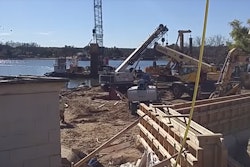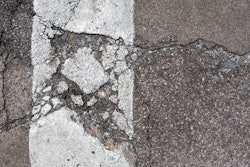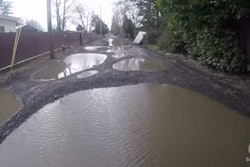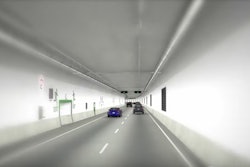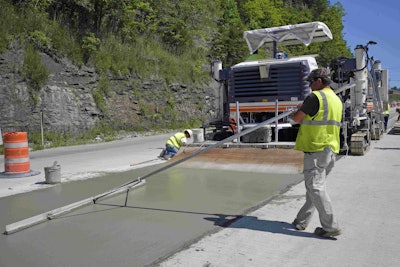 Concrete pavement is hand finished in advance of tining.
Concrete pavement is hand finished in advance of tining.American Concrete Pavement Association President and CEO Gerald Voigt says that 2018 was just the start of what he calls a “strong rebound” for the concrete pavement market, issuing a forecast for the largest market volume increase in the last six years.
The association is projecting 56.2 million square yards Voigt annnounced during a press conference at World of Concrete 2019 in Las Vegas. That would represent an increase of 7 percent over the 2018 volume of 52.5 million square yards, which was a 10-percent increase over 2017.
The ACPA projection is assembled from several sources, Voigt says, including “carefully analyzed state bid tabs and data provided or corroborated by executive directors/presidents of ACPA’s 20 chapters around the country.”
Though the association’s projection applies only to state highway department projects, Voigt says municipal and county road projects have historically followed the trend line of state departments.
Voigt says the concrete pavement market has stabilized and is emerging from a period where public agencies deferred on major capital improvement projects in favor of pavement preservation due to uncertainty about federal funding for highways.
“Capital improvements have been hammered…with the lack of a robust federal funding plan,” Voigt says, noting that on average, federal funding represents 45 percent of a state’s investment in roads and bridges.
However, Voigt says that many of the funding challenges that have plagued the industry are being addressed at the state level. “A solid and continued use” of concrete pavement overlay technology has also bolstered the industry, accounting for just under 12 percent of the total market since 2010. “We anticipate this trend will continue in the years ahead,” Voigt says.
As for federal funding, Voigt says the group is “cautiously optimistic.”
“Congress and the current administration both have plans. What remains to be seen is if they can come together on the issue,” he says.
RAMP to the future
Some fresh optimism for the ACPA came from the recent recommendation of a special committee formed by the Transportation Research Board.
Tasked by Congress to study the current state of the Interstate Highway System and recommend a path toward updating these federal highways, many of which were built between 50 and 60 years ago, the committee has recommended Congress legislate an Interstate Highway System Renewal and Modernization Program, or RAMP.
According to the National Academies of Science, Engineering and Medicine website, the program would be modeled after the original Interstate Highway System Construction Program, with the U.S. government providing oversight and around 90 percent of the funding. The program would:
- Reconstruct deteriorated pavements, including their foundations, and bridge infrastructure.
- Add physical capacity and operations and demand management capabilities (e.g. tolling).
- Increase the system’s resilience.
As part of the program, the TRB committee recommends that federal funding for interstates increase from the current level of $20-$25 billion per year to $45-$70 billion annually over the next 20 years.
“Rebuilding interstate highways is directly in the expertise of the concrete pavement industry,” Voigt says, adding that this level of increased funding would be transformative to the industry.
To provide the increased funding, the committee recommended that Congress increase the federal fuel tax and adjust the tax to account for inflation and changes in vehicle fuel economy.
The committee also recommended that Congress “prepare for the need to employ new federal and state funding mechanisms, such as the imposition of tolls or per-mile charges on users of the Interstate Highway System.”

